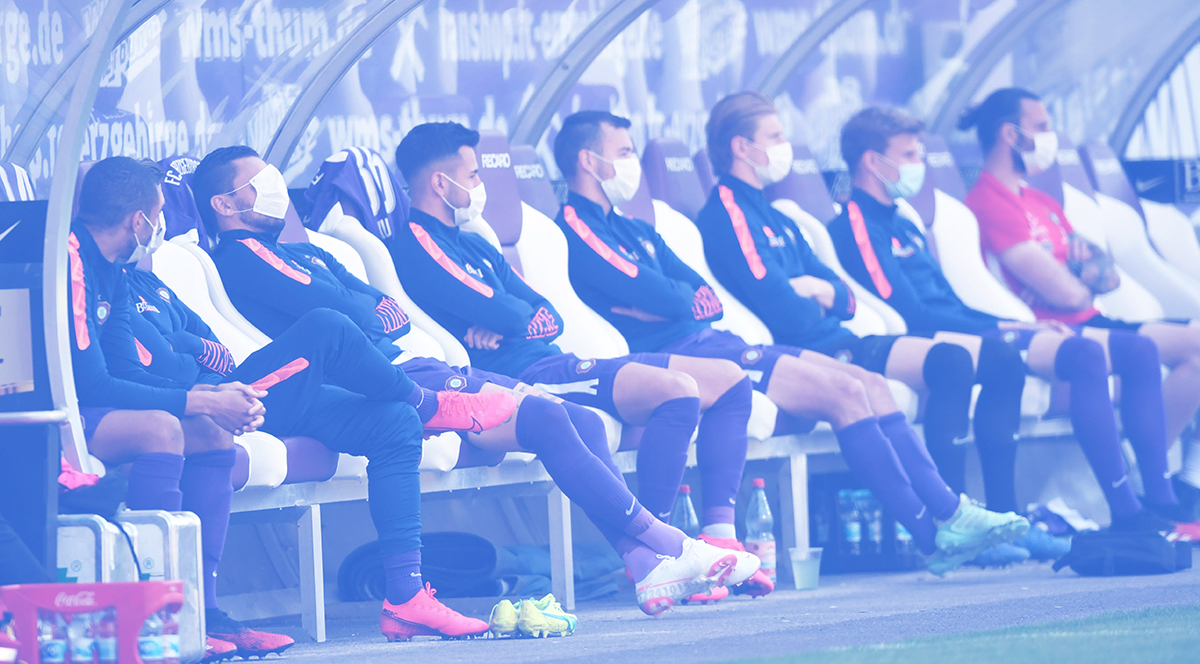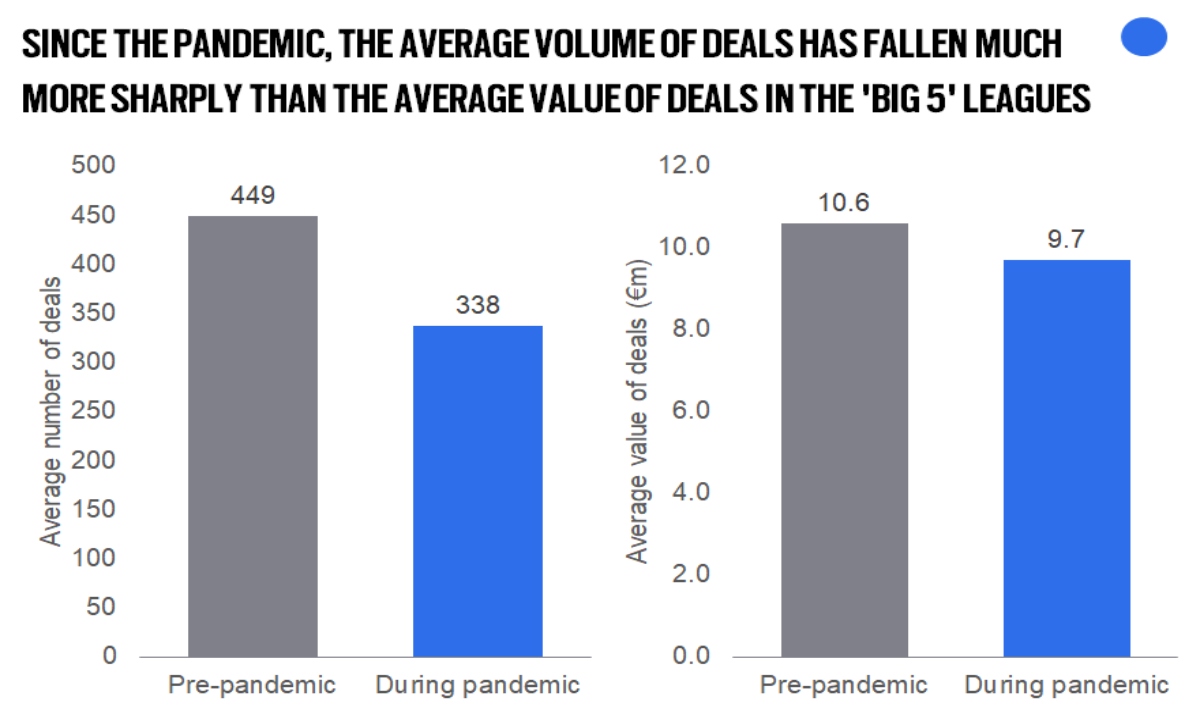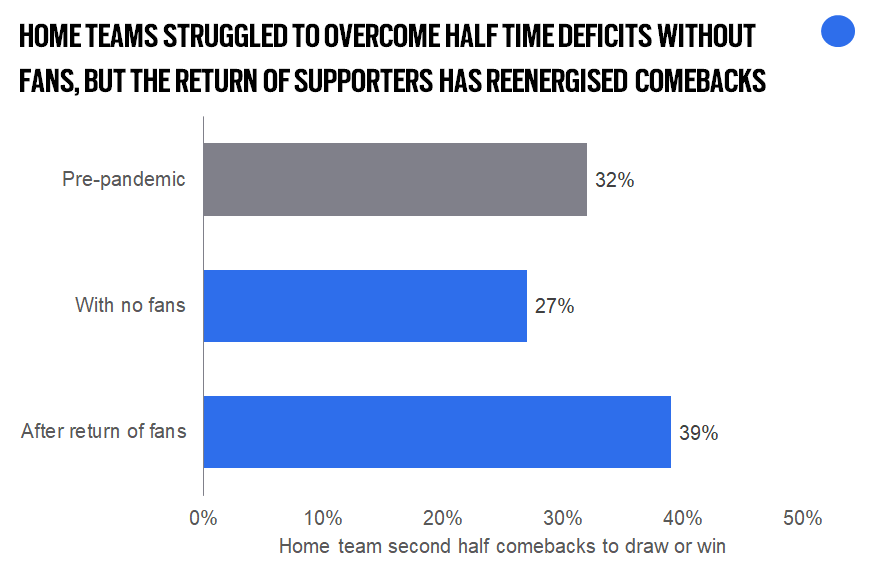Thought Leadership
Off The Pitch Column: Persistent sellers, underperforming players, indispensable fans and ruined calendars – Covid-19 did much more than just harm revenues
7 MIN READ
Thought Leadership
Inspired by what you’re reading? Why not subscribe for regular insights delivered straight to your inbox.
Football has battled its way through the Covid pandemic and after a brief pause in the spring of 2020, competitions around the world have endeavoured to deliver action for fans in difficult circumstances. There have, however, been significant consequences on the sport, including:
- A radical shift in transfer market dynamics
- A new appreciation of home advantage
- Impacts on player performance following Covid infection
- Challenges to sporting integrity and calendars
Nearly two years into the pandemic, we can use our analysis tools to unpick how Covid has disrupted football.
Market inertia creating problems for clubs
Early predictions about the transfer market veered towards expectations of a total – and in some cases catastrophic – collapse. What is notable in Europe’s top 5 leagues, which make up the biggest share of global market activity, is that the volume of deals have declined much more sharply than the value of deals.
Comparing the summers preceding the pandemic to the two summers since, the total number of players transacted for a fee into these leagues has fallen by 25%. However, the average value of deals has fallen only slightly, remaining around €10m.
This suggests there is greater friction during negotiation, with sellers reluctant to drop their prices unless absolutely necessary. In the face of financial uncertainty, buyers have therefore dropped their overall activity in order to avoid over-committing on costs.
For many clubs, this has resulted in challenges offloading squad and fringe players. The current market dynamics suggest that clubs are expecting to eventually return to pre-pandemic volumes and values of deals, but if the 2020-2022 period becomes the new normal then clubs may need to adapt their player trading model.
The return of fans highlights the value of home advantage again
One of the great ironies of the downfall of the European Super League was that its protagonists underestimated the feeling of supporters – when the previous 12 months had shown exactly how important supporters are to the game.
In matches with fans, home wins fell from 44 per cent to just 40 per cent in the top 5 European leagues. In the Premier League, away wins became more common, increasing from 30 per cent to 35 per cent in the absence of fans – unprecedented in the history of the game.
Home teams clearly struggled without their usual backing, and referees were also less afraid to penalise these teams for infringements.
Fans don’t just help their team from kick off; they can also spur them on to achieve comebacks.
Defining a comeback as when a home team is trailing at half time before coming back to draw or win the match, we can see that pre-Covid comebacks were at 32 per cent, this dropped to 27 per cent without fans, before increasing again to 39 per cent post the return of fans to stadiums – a sign that fans are more important than ever.
The effects of Covid linger longer for elite players
One of the defining truths of the pandemic has been the virus’ ability to infect fit and healthy young people, with professional footballers being no exception.
While discussion has focused on the disruption that the absence of star players has caused, little has been done to analyse what Covid has done to player performance.
In conjunction with The Economist, we found that players’ performance was measurably worse up to 10 weeks after contracting the virus.
This finding places even more importance for clubs on minimising the risk of infection, as it is not just the isolation and match absence that is damaging for a team’s overall results.
Postponements threaten integrity of competition and pose calendar challenges
As bubbles and public restrictions are relaxed, clubs have experienced outbreaks in cases, forcing the postponements of matches. This has led to some leagues witnessing unprecedented discrepancies between clubs in the number of games played.
In the last two seasons, the Bundesliga, La Liga, and Premier League have all either had gaps of 3 or 4 (and up to 6) matches played between teams, well in excess of the typical maximum of 1 or 2.
All this is taking place in the context of a global football calendar land-grab, with UEFA expanding the Champions League from 2024 and FIFA proposing a biennial World Cup and expanded Club World Cup.
Uncertainty still reigns about the future of the pandemic, and as such the extent to which players will need to isolate upon infection in the future.
Postponements are and will cause huge headaches for competition organisers; optimising scheduling to reduce the pain for clubs will be critical.
There is also the question of sporting integrity. While no evidence exists to suggest that it is better to have ‘points on the board’ or vice versa, there will be circumstances where postponements favour one team over another, and stretch beyond the usual bounds of competition ebb and flow.
Competitions will need to define acceptable, evidence-based limits around these issues.
Two years of a pandemic has allowed us to see how the industry and its key players have reacted, but the challenge is not over yet. Leagues, clubs, and players will all need to continue to adapt, and make decisions based on evidence of how the world has changed.
If you would like to find out more about the effects of Covid on football and how our Performance Intelligence can help your organisation, please contact Omar Chaudhuri.
This article was originally published by Off The Pitch.





